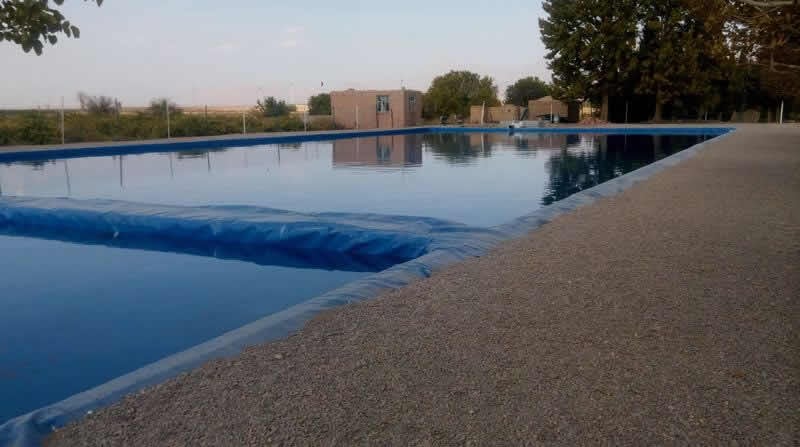5/5 - (1 vote)

What is Geomembrane
Geomembrane comprising a unitary structure fabricated by co-extrusion including a center core, a thermoplastic adhesive layer secured on one side of the center core, and a textured layer secured on the opposite side of the center core. The geomembrane is utilized in the manufacture of a liner for earthen constructions by employing the thermoplastic layer of the geomembrane to secure the geomembrane to a geosynthetic clay liner. Ground water contamination is a primary environmental concern. One method of controlling ground water contamination comprises the lining of landfills, canals, ponds, and similar earthen constructions with a liner comprising a geosynthetic clay liner and an underlying geomembrane. In this manner seepage from the lined construction into the underlying ground water is prevented. More particularly, liners for landfills, canals, ponds, and similar earthen constructions may comprise a layer of bentonite. The upper surface of the bentonite layer is secured by a layer of woven polypropylene. A layer of non-woven polypropylene textile is positioned below the bentonite layer. A geomembrane is secured to the lower surface of the non-woven polypropylene textile which may be provided with a textured lower surface to prevent shifting of the liner relative to the underlying construction. Heretofore the fabrication of liners in which a geomembrane is secured beneath a geosynthetic clay liner has been complicated by the necessity of applying a glue layer to the upper surface of the geomembrane in order to secure the geomembrane to the geosynthetic clay liner. The application of the glue layer has required a separate manufacturing step which has typically been carried out at a remote location. The cost of manufacturing the liner is therefore substantially increased.Usage of geomembrane
Using water tanks in order to prevent waste and contamination of reservoirs Using water tanks in order to prevent pollution of environment and the groundwater. Isolate underground concrete structures in order to protect against moisture and corrosive substances Use as an insulator in water storage pool Using as insulator in artificial lakes Coating of artificial wetlands and lakes Coating of fish and shrimp ponds Coverage of urban sewage treatment lagoons and industrial effluents Coating chemical storage tanks Cover tunnels and subway transit vehicles Covering Water and sanitation Channels Using in the context of roads and railway lines Using In areas where insulation is needed Use to create an impenetrable covering waste in landfills Using In the process of leaching of minerals Covering the floor and walls of fuel tanks Coating of evaporation ponds In order to prevent water penetration into the building foundationBenefit of using Geomembrane
- Long life
- High environmental resistance
- Mechanical strength
- Resistance to corrosive substances
- Resistance against UV radiation
- Resistance against biological attacks, plants growing and rodents attack